As narrated by Attorney W. E. Michael
I have been requested to write a resume of the historical events showing the origin and growth of the Sweetwater Hospital Association. Having served with the association since its beginning, it is a pleasure to remember and recount some of the salient facts that gave rise to the birth and growth of this association.
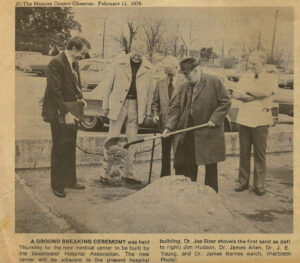 At this stage, it might be well for us to emphasize the definition of a nonprofit organization. We have heard many people sneer at the statement that the Sweetwater Hospital Association is a “nonprofit” corporation. If the public knew the facts concerning this hospital, they would recognize that it is a unique organization and almost one of its kind. It is a nonprofit corporation in that no stock has ever been issued, nor can be issued; no money is ever divided up, because there are no stockholders; and any money that is left over after the patients have paid their bills, it is dedicated by law and by resolution of the Board of Directors to perpetual use for medical care of people served by the hospital association. If the hospital were not able to put aside a little money for days of poor collection or for famine or pestilence, then the hospital would have to close its doors just as soon as its money ran out, which would be immediately.
At this stage, it might be well for us to emphasize the definition of a nonprofit organization. We have heard many people sneer at the statement that the Sweetwater Hospital Association is a “nonprofit” corporation. If the public knew the facts concerning this hospital, they would recognize that it is a unique organization and almost one of its kind. It is a nonprofit corporation in that no stock has ever been issued, nor can be issued; no money is ever divided up, because there are no stockholders; and any money that is left over after the patients have paid their bills, it is dedicated by law and by resolution of the Board of Directors to perpetual use for medical care of people served by the hospital association. If the hospital were not able to put aside a little money for days of poor collection or for famine or pestilence, then the hospital would have to close its doors just as soon as its money ran out, which would be immediately.
Before coming to Sweetwater and since 1914, I lived in the nearby town of Niota. So in a manner of speaking, I have been knowledgeable to a small degree at least, of medical facilities in this section of East Tennessee since 1915 or for more than 60 years. In the beginning, that is in the late teens’, there was not a hospital between Knoxville and Chattanooga, at least not in this part of the Southern Railway or the highway. The first hospital was probably a renovated residence in Cleveland, Tennessee, used and occupied by Dr. Speck, and was known as Speck Hospital. This came into existence about 1920 or 1921. One of the early hospitals was the Foree Hospital in Athens. Most patients to who required hospitalization or surgery in those days were sent to the Knoxville or Chattanooga by train. There was no ambulance service, the highways were narrow, unpaved, dangerous, so a person who had been injured or became ill in any of the small towns on the Southern Railway was carried to the Southern Railway station and placed on a cot or a stretcher and then upon the next passenger train going to either Knoxville or Chattanooga. There were two local passenger trains each day and these stopped at every station stop. There were also for express trains that stopped only at the larger towns like Sweetwater, Athens, Cleveland, Loudon, and Lenoir City.
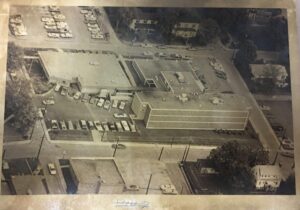 About 1926, the Sweetwater High School moved to the new county high school building which, incidentally, is the one currently in use. Prior to that time, the high school had been housed in a building on the same lot as where the president hospital building stands but over in the corner closer to High Street and to the Baptist Church. This was a large, three story building or at least 2 1/2 story brick building. It had formally housed TMI and then it housed the entire high school in grade school grades at one time, and then the Sweetwater High School. It became in abandoned and empty building when the high school moved about 1926.
About 1926, the Sweetwater High School moved to the new county high school building which, incidentally, is the one currently in use. Prior to that time, the high school had been housed in a building on the same lot as where the president hospital building stands but over in the corner closer to High Street and to the Baptist Church. This was a large, three story building or at least 2 1/2 story brick building. It had formally housed TMI and then it housed the entire high school in grade school grades at one time, and then the Sweetwater High School. It became in abandoned and empty building when the high school moved about 1926.
Shortly after 1926, and more likely about 1928, Dr. Prentiss E. Parker moved to Sweetwater from Houma, Louisiana. I do not recall the arrangement which Dr. Parker made with the city for the use of the old high school, but he did make some arrangements and established in about 1929, the first hospital that Sweetwater ever had. This hospital was simply a very slight renovation of the old school building. The rooms were used largely as they have been, except that the desks were moved out and the beds were moved in. He installed an operating room with what was then primitive, compared to the modern, operating facilities, and for several years operated this hospital. I cannot recall whether the hospital had a name, unless it was called Sweetwater Hospital, but it was solely owned and operated by Dr. Parker. About 1933 or 1934, he left Sweetwater and went to Johnson City, Tennessee, where he established the Parker Budd Clinic which flourished for a while in Johnson City.
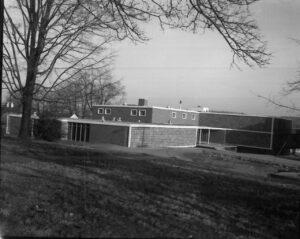 As an interesting sidelight I’m Dr. Parker and the era when he was in Sweetwater, we must remember that compared to modern medical and surgical practice, that in the late 1920’s and early 1930’s such facilities were very primitive. Nevertheless, Dr. Parker did some very serious and successful operations. Some were not successful. He did not have the modern lifesaving equipment. On one occasion, there had been an automobile accident on the highway between Sweetwater and Athens, in which Mr. Gaines Hutcheson, now deceased, was severely injured. He had some broken bones and a condition that required immediate surgery. He was brought to Dr. Parker at the hospital. At that time, Dr. Parker was operating upon his own daughter, for acute appendicitis. She was a very attractive young lady, I do not recall her exact age but somewhere between 14 and 18 years of age, and she died upon the operating table while he was operating. Gaines Hutchison was wheeled in immediately as she was wheeled out, and Dr. Parker did a successful abdominal operation on Gaines. Incidentally, Gaines and Dr. Parker are now deceased.
As an interesting sidelight I’m Dr. Parker and the era when he was in Sweetwater, we must remember that compared to modern medical and surgical practice, that in the late 1920’s and early 1930’s such facilities were very primitive. Nevertheless, Dr. Parker did some very serious and successful operations. Some were not successful. He did not have the modern lifesaving equipment. On one occasion, there had been an automobile accident on the highway between Sweetwater and Athens, in which Mr. Gaines Hutcheson, now deceased, was severely injured. He had some broken bones and a condition that required immediate surgery. He was brought to Dr. Parker at the hospital. At that time, Dr. Parker was operating upon his own daughter, for acute appendicitis. She was a very attractive young lady, I do not recall her exact age but somewhere between 14 and 18 years of age, and she died upon the operating table while he was operating. Gaines Hutchison was wheeled in immediately as she was wheeled out, and Dr. Parker did a successful abdominal operation on Gaines. Incidentally, Gaines and Dr. Parker are now deceased.
When Dr. Parker left Sweetwater or about the same time, Dr R. M. Price, the surgeon whose home has been in Philadelphia, Tennessee, came to Sweetwater and joined Dr. W. J. Cammeron in the practice of medicine. Dr. Cammeron had come to Sweetwater and established an office on Main Street in 1929. When Dr. Parker and Dr. Price came to Sweetwater, it was decided to reopen or to continue operating the hospital. Dr. Cammeron and Dr. Price were the doctors involved and they were also very prominent in sponsoring the development of the hospital. This was during the time of the WPA in the PWA. Young people will not remember those programs, but they were programs initiated during the depression of 1930 designed to restore confidence in the country and to assist in public works.
My connection with the hospital officially began about that time. After J. A. Sizer was a member of the City Board of Commissioners, and I was City Attorney. He and I are the only two living people except Dr. Cammeron, who is away from Sweetwater, who would have any substantial memory of those early days of Sweetwater Hospital. The community at that time became interested in having some better medical facilities than had existed up to that time. Through the city of Sweetwater, an application was made to the Federal Government and a PWA grant was obtained. This grant was administered primarily through the auspices of the city of Sweetwater, which incidentally put no money into the structure, and it was because of this connection, I suppose, that Dr. Sizer and I became more closely associated with the hospital. I remember that Mr. J. Walker Airheart, a member of the city board, was in some supervisory position in the subsequent work of the hospital. The PWA Grant was made and was used for the purpose of transforming the old high (school) building into a more usable and modern hospital building. There was something of a major job of overhauling. Hospital rooms were constructed, waiting rooms, rooms for the other hospital and medical facilities and the operating room was modernized. A county or local medical association existed at the time and all the doctors in the county were made members of the hospital staff.
It might be interesting to record it this time the names of at least some of the doctors who were practicing in Sweetwater and in Monroe County at the time the first hospital facility was established by Dr. Parker in Sweetwater.
In Sweetwater besides Dr. Cammeron, who was a newcomer, there was, Dr. W. H. Arrant, Dr L. L. Barnes, (father of Dr. James H. Barnes), Dr. J. A. Hardin, Dr. T. M. Roberts, and Dr. W. A. McClain, who died about that time. Other doctors in the county were Dr. B. W. Bagwell, at Madisonville, Dr. M. D. Shearer of Tellico Plains, Dr. W. A. Rogers of Tellico Plains, Dr. H. C. Shearer of Madisonville, and Dr. W. W. Leonard of Tellico Plains. There was also Dr. Sharp who practiced at Vonore at that time.
It might be well to set the stage for the beginning of the Sweetwater Hospital Association by revealing just briefly the type of medical facilities that were available at a time and the methods of medical practice. As I have already stated, there was no quick ambulance service to any hospital and certainly not any to Knoxville or Chattanooga. There were no hospitals immediately available and Doctors’ offices then were not equipped as they are now. As a matter of fact, it was rare indeed to see a patient in a doctor’s office. Practically all the medical arts were practiced at home with the patient in his own bed. I am sure it would be difficult for youngsters growing up now to realize how medicine was practiced in those days and that is less than half a century ago. All patients, or nearly all patients, were seen in house calls and all doctors did house calls at all hours of the day or night. So when a hospital was established where patients went to see the doctor at a fixed place of business, this was something of a new departure. With the advent of Dr. Price and Dr. Cammeron to Sweetwater began, locally at least, the practice of the patient going to the doctor rather than the doctor going to the patient (began).
The present Sweetwater Hospital Association was not the first organization to undertake to operate a hospital in Sweetwater. With the coming of Dr. Price, there was established by the local doctors and medical association a staff to work in the hospital. This staff had regular meetings, and actually adopted by-laws and the skeleton of a nonprofit corporation for the operation of the hospital. This occurred when by-laws, rules and regulations were adopted on September 3, 1934. The organization was known as the Sweetwater Hospital, but the official name of it was Medical Staff of the Sweetwater Hospital. It had by-laws and regulations much of the same as those in existence at the present time, except of course, they have been modified greatly technological progress and medicine and therapy. The first officers of the Sweetwater Hospital were R. M. Price, President, and Dr. T. M. Roberts, Secretary. The doctors which I have already mentioned as practicing in Sweetwater, that is Roberts, Hardin, Barnes, Arrants, Cammeron, and Price, were all active members of the staff together with Dr. S. G. Saunders who was in Loudon, Tennessee and who assisted in the operation of what is known as the Harrison Hospital and Loudon, operated by Dr. Price and Dr. Cammeron in conjunction with the Sweetwater Hospital. Members of the Courtesy Staff of the Sweetwater Hospital were Dr. B. W. Bagwell of Madisonville, Dr. R. C. Kimbrough of Madisonville, Dr. W. W. Leonard of Tellico Plains., Dr. J. A. McCollumn of Vonore, Dr. W. A. Rogers of Tellico Plains, Dr. H. C. Shearer of Madisonville, Dr. M. D. Shearer of Tellico Plains, Dr. J. E. Price of Erie, Tennessee, Dr. William J. Able of Decatur, Dr. Merritt of Ten Mile, Dr. Earl P. Bowerman of whom I have no memory, and Dr. W. R. McCamey whom I assume was of Niota. Other physicians practicing in the Monroe County area were Dr. W. A. McClain, Sweetwater, Dr. W. A. Rogers, of Sweetwater and Dr. E. J Foute of Vonore.
Although doctors have contributed greatly to the success of the Sweetwater Hospital Association, it has never been under the control or dominion of the doctors, but under an independent Board of Directors, many of whom had no connection with any part of the medical profession. However, because Sweetwater is a small town and facilities have been few, the history of the Sweetwater Hospital Association would not be complete without references to the various doctors to practicing their professional skills through the hospital and in the area. In addition to those already mentioned, there was Dr. D. F. Heuer, now deceased and Dr. Charles Stockard, who practiced in the Church Street Clinic, at different times with Dr. J. E. Young. Prior to the coming of Dr. Young to Sweetwater, in 1942, Dr. Morris Weiner practiced medicine and surgery at Sweetwater, for some two or three years.
At this point it might be appropriate also to add that prior to the coming of Dr. Parker to Sweetwater, there was no such thing as county medical or health departments or county nurses. In fact, nurses were rather a strange sight when Dr. Parker initiated a program for nurses training. It was considered a great and innovative move in Sweetwater.
The fate of the original Sweetwater Hospital as an organization is already lost in memory. When the renovation of the building was completed, which was sometime in 1936, it was decided to incorporate the Sweetwater Hospital Association. The first meeting of the directors of the Sweetwater Hospital Association was held in the Kiwanis Dining Room of the James Monroe Hotel in Sweetwater on August 26, 1936, at 7:30 PM. Present were: F. A. Carter, Dr. R. C. Kimbrough, J. H. Patton, Sr., M. E. Robertson, Dr. J. A. Hardin, Dr. R. M. Price, W. E. Michael, J. A. Sizer, and E. D. Waller. One of the first actions of the Board was to provide that all officers were to serve without salaries and this is been the policy of the Sweetwater Hospital Association for 40 years.
It might be interesting to note that in the beginning, in the first report, in 1937, the balance of money in the hospital association treasury, was $113.32. The Charter of the new hospital association was excepted by the Directors. This charter was issued by the Secretary of State of the state of Tennessee on August 19, 1936. The Sweetwater Hospital Association which is the name of the new organization was authorized to establish offices, hospitals, and clinics to purchase and hold or receive by gifts or otherwise equipment, medicine and all forms of property, and to carry on the business of furnishing medical care. This organization was created under the General Welfare laws of the state of Tennessee and was and is a nonprofit organization.
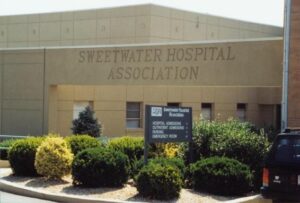 The Sweetwater Hospital Association has grown by leaps and bounds in the last 40 years. At first the growth seemed to be very slow, but it has been consistent, and by good management, in a generosity of many people, the Sweetwater Hospital Association was able to buy from the city for $45,000.00 the block upon which the hospital building now stands. It was able to borrow money and build the hospital building and to pay the money back. It was able to and is now building, a new medical facility for the purpose of attracting doctors to serve the medical needs of the community.
The Sweetwater Hospital Association has grown by leaps and bounds in the last 40 years. At first the growth seemed to be very slow, but it has been consistent, and by good management, in a generosity of many people, the Sweetwater Hospital Association was able to buy from the city for $45,000.00 the block upon which the hospital building now stands. It was able to borrow money and build the hospital building and to pay the money back. It was able to and is now building, a new medical facility for the purpose of attracting doctors to serve the medical needs of the community.
Sweetwater Hospital Association has been the recipient of many gifts, all of which have been used for the care of the sick, or the providing of facilities. In the beginning, Dr. Price and Dr. Cammeron each subsidized the hospital with an annual gift, of $3000.00 each per year. Other doctors who have practiced in the hospital have made gifts of varying amounts. Dr. J. E. Young has made substantial gifts to this hospital in the way of many thousands of dollars worth of equipment as well as valuable time and services. Without calling the names of each individual doctor, practically all doctors since 1934 or 36 who have practiced at Sweetwater Hospital have made valuable contributions. In addition to the contributions from doctors have been contributions from nurses and patients. To give a list of them would be long and impossible, but many families in the city have made gifts of money or property. At one time, in the old building, there were memorial rooms established by various families in memory of the family departed. Sweetwater Hospital Association has had various grants, but none with the string attached. At one time or perhaps on two occasions, there were substantial grants from the Ford Foundation.
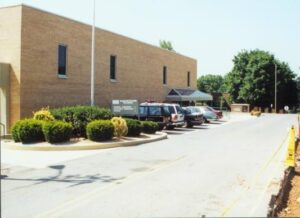 The financial structure and history of the Sweetwater Hospital Association is long and complex. It is very easy to draw conclusions if one is not familiar with the entire history. For instance, at a meeting on March 2, 1959, of the executive committee of the hospital association, it was recorded that the doctors interested in theoutpatient department of the hospital would each land $10,000.00 to the Hospital Association, 5% interest. According to later records, it appears that Dr. J. E. Young, Dr. D. F. Heuer, Dr. J. H. Barnes and Dr J. K. Wallace each made loans of $10,000.00 or a total of $40,000.00 to the hospital association to be used on it’s building fund. Throughout the history of this hospital, and the hospital association, there has been a good working relationship between the doctors and hospital association. As can be seen from the instances which I have already cited, the doctors repeatedly made financial contributions in the form of gifts or loans that kept the association alive.
The financial structure and history of the Sweetwater Hospital Association is long and complex. It is very easy to draw conclusions if one is not familiar with the entire history. For instance, at a meeting on March 2, 1959, of the executive committee of the hospital association, it was recorded that the doctors interested in theoutpatient department of the hospital would each land $10,000.00 to the Hospital Association, 5% interest. According to later records, it appears that Dr. J. E. Young, Dr. D. F. Heuer, Dr. J. H. Barnes and Dr J. K. Wallace each made loans of $10,000.00 or a total of $40,000.00 to the hospital association to be used on it’s building fund. Throughout the history of this hospital, and the hospital association, there has been a good working relationship between the doctors and hospital association. As can be seen from the instances which I have already cited, the doctors repeatedly made financial contributions in the form of gifts or loans that kept the association alive.
The present hospital building was constructed more or less piecemeal but was finished in the early part of 1963. At that time the, the old building, since dismantled, was still standing. Dr. J. E. Young, donated freely of his time and abilities in the planning, construction in completion of the new hospital building.
As an illustration of the tremendous changes in medical care, we might devote a little time to the subject of administrators. That term was unknown, at least locally, when the Sweetwater Hospital Association was formed. The office not generally referred was then referred to as Secretary. Among the Secretaries to the Association originally were T. D. Edwards, who was in office for only a limited time, and followed by M. F. Henley, now deceased. Mr. Henley served as Secretary for a number of years and left Sweetwater Hospital to accept a similar position in a hospital in Huntsville, Alabama. It should be noted here that many doctors and other personnel have come and gone and if they remained here only a short while, they are not necessary to this recitation of the history of the association. However, I would like to add that Louise Price Ballard who is a sister to Dr. R. M. Price, served for some 2 or 3 years as the Secretary of the association. Those years would have been from about 1940 to 1943.
Mr. M. F. Henley resigned as secretary and treasurer of the hospital in the early part of 1952, and on a special called meeting of the Board on February 18, 1952, Miss Ester Pennington was elected Secretary – Treasurer. At or about the same time, Ms. Pennington had been appointed as Superintendent of the Sweetwater Hospital and she then proceeded to fill both offices. The title Superintendent to the hospital was forerunner of hospital administrator, and Miss Pennington served for some 13 or 14 years, it is not clear as to exactly when her title was changed to that of Administrator. The records show, however, that she resigned, and on May 28, 1963, Major Leonard N. Cathcart was employed to fill the position of Administrator, to take the place of Miss Pennington who had resigned. Miss Pennington is now deceased. She was commended for her fine work by the board.
Mr. Kenneth Lowery, was elected in 1976 to replace Major Cathcart as Administrator. The change in medical services is reflected in the fact that compared to the short 40 year life of the Sweetwater Hospital Association, the office work, that is the detail and business side of hospital operation has increased from the point where one person could keep the books in the hospital administrator, to a point where a full time administrator plus assistants, auditors, bookkeepers, and modern equipment is required to keep up with all the forms, to make out all the reports and perform all the services required in present day hospital operation.
Mr. Scott Bowman retired from his longstanding role as hospital administrator on Jan. 1, 2021.
He began his journey at Sweetwater Hospital Association in May of 1976 as the assistant administrator and, after one year, was promoted to administrator. In 1977, Bowman, through a unique hospital-physician management arrangement, the first of its kind, was able to recruit medical specialties and subspecialties to the hospital and community that are still in effect.
Dr. Ian E. McFadden, FACHE currently serves as the Chief Excecutive Officer of Sweetwater Hospital Association.
McFadden is an experienced, senior level healthcare and business executive. McFadden, who is originally from Tuskegee, Alabama, comes to Sweetwater from Melbourne, Florida. He has served as a hospital CEO and consultant for various organizations.
He has an extensive background in hospital leadership, having previously served as CEO of the Methodist Hospitals in Gary, Indiana and CEO of Roseland Hospital in Chicago, Illinois. McFadden has also spent several years in Tennessee in the role of consultant for FTI Consulting, based in Brentwood; as the chief operations officer (COO) for Regional One Health in Memphis, and as vice president for Hospital and System Operations for West Tennessee Healthcare, based out of Jackson.
McFadden is a Fellow of the American College of Healthcare Executives, and has received numerous recognitions from various healthcare organizations.
